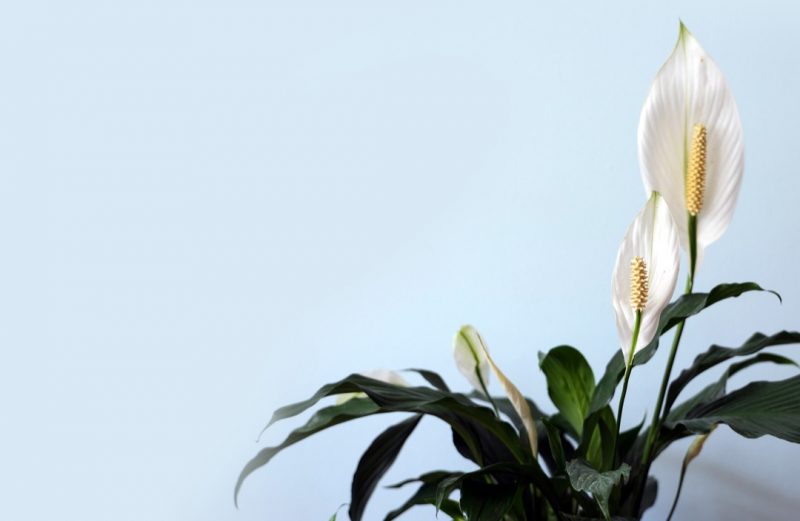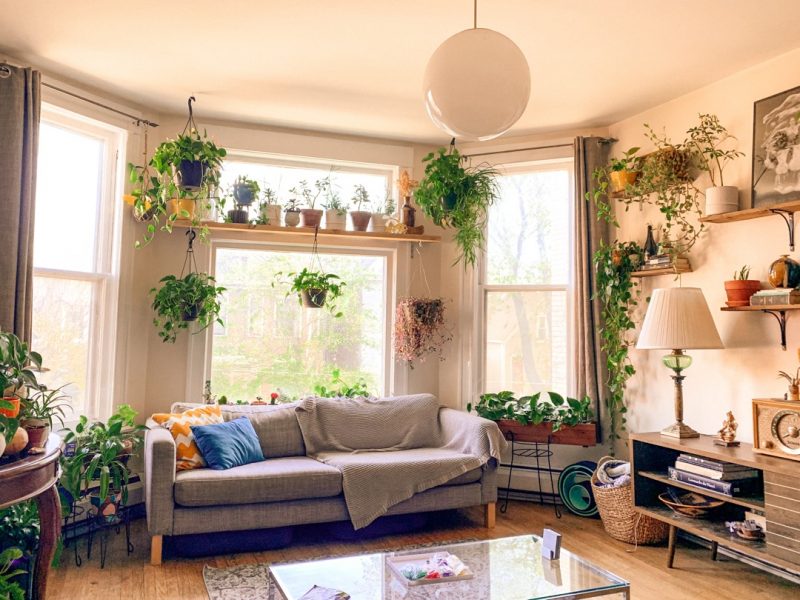
Indoor plants not only make for beautiful indoor decor, they also come with some fascinating health benefits. One of the most beneficial components of indoor plants are their air purifying abilities! Certain plants have natural filters on their leaves that catch allergens such as dust, pollen, and other airborne particles. Plants such as the Chinese Evergreen and the Peace Lily are experts at this. Plants with patterned leaves, like Violets, are also very good at trapping allergens. This article will explore the different benefits that plants can bring into our lives and different ways to utilize them.

When it comes to how many houseplants you should have to reap the benefits of the air cleaning effects, NASA recommends 15-18 house plants for an 1800 square-foot house. This is about 1 plant per 100 square feet. While some may not be able to keep this many plants in their home, Dr. Virginia Lohr, a professor of horticulture at Washington State University, says that even filling as little as 2% of the room with plants will make an impact. Plants improve air quality in other ways, too. Some indoor plants release water vapor into the air, increasing humidity, which can be great for skin and respiratory problems. The hydration from the humidity can offset the dryness in the air that usually causes allergies, and acts as relief for some conditions including headaches and allergy induced itchy throats.

Plants increase oxygen levels in the air around them. The average indoor plant produces about 27 liters of oxygen a month. Placing plants close to your desk, your bed, or couch can help increase the amount of oxygen in that area through photosynthesis. An increase in oxygen levels to the brain is shown to help decrease stress levels, and increase your mood. The more fresh air and oxygen you breathe, the more serotonin your brain will create, therefore making you feel more happy!
Horticulture therapy, also referred to as indoor gardening, is also known to help the side effects of mental illness among those who participate. Indoor gardening has been shown to increase feelings of well-being among those with anxiety and depression. Horticulture-therapy, is known to help people overcome feelings of depression, anxiety, and is shown to help survivors of domestic abuse. Gardening can act as an outlet for their trauma and feelings of anxiety and depression, especially in Children.This form of therapy is centered around “biophilia”, which is the concept that people feel connected to plant life and nature. This type of therapy allows people to feel they are taking care of something, and helps them build self-confidence. It also helps build more compassion, patience, and social connections. Taking care of plants is shown to have increased “feel-good hormones” such as serotonin and dopamine. Just focusing on specific tasks, like trimming and watering plants, can help reduce negative thoughts and can help offer immediate relief of anxiety.

If you don't have much of a green thumb, do not worry! Plants have the amazing ability to be used to make essential oils, which provide some of the same benefits as plants do. Essential oils are extracts from plants, like seeds, leaves, and blossoms, and are formulated into natural oils which have been known to help improve mood and improve mental health. Some essential oils used to help with depression include Jasmine, Sandalwood, and Chamomile. Some oils used to help aid anxiety include Rose, Frankincense, and Bergamot. When you inhale the oils, they travel through the brain into the amygdala, which is the emotional center of the brain. Once reaching the amygdala, oils such as lavender provide a calming feeling, which can help with anxiety. Sandalwood can help increase serotonin levels, further helping with feelings of depression.

When it comes to pricing of indoor plants, many smaller plants can be very inexpensive. A Chinese Evergreen plant can range anywhere from $30 to $70, depending on the size. Peace Lilies range anywhere from $25 to $100, depending on the size. A Chrysanthemum is another beautiful plant known for its air purifying qualities, and you can find one anywhere from $5 to $30. These plants also bloom into beautiful arrangements of flowers of all different colors. The other great thing about plants is that they grow! So if you’re on a budget, start with smaller, less expensive specimens that grow larger over time. You’ll save money and gain satisfaction from watching them change.

There are a lot of different ways to display plants in your home. An indoor hanging garden is an adorable & space efficient way to store plants as wall decor. Especially great in a predominately white room, hang a wooden wall shelf for potted plants and see how it adds a cute pop of color to the room. Another option is hanging planters, which are just like coat racks, but for plants! You can find woven plant carriers that are meant for hanging plants, and hang them on the rack. This also keeps plants out of the way of animals and small children. A personal favorite are mini planter boxes! This is a DIY activity, and can easily be made with small pieces of plywood. Once this box is done, it can also be glued or nailed onto a wall, either inside or outside, for an adorable decoration and way to grow home-grown plants or herbs. The benefits of indoor plants are too good to be ignored! Invest in yourself and your health and get yourself a little plant to add to your favorite space in your home.

